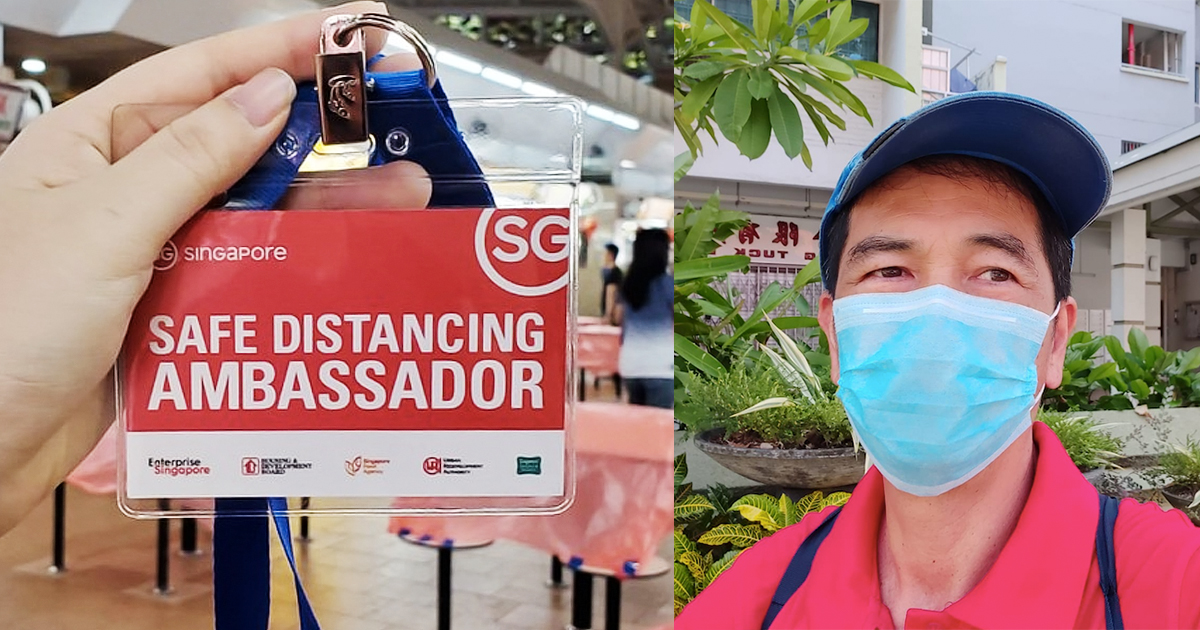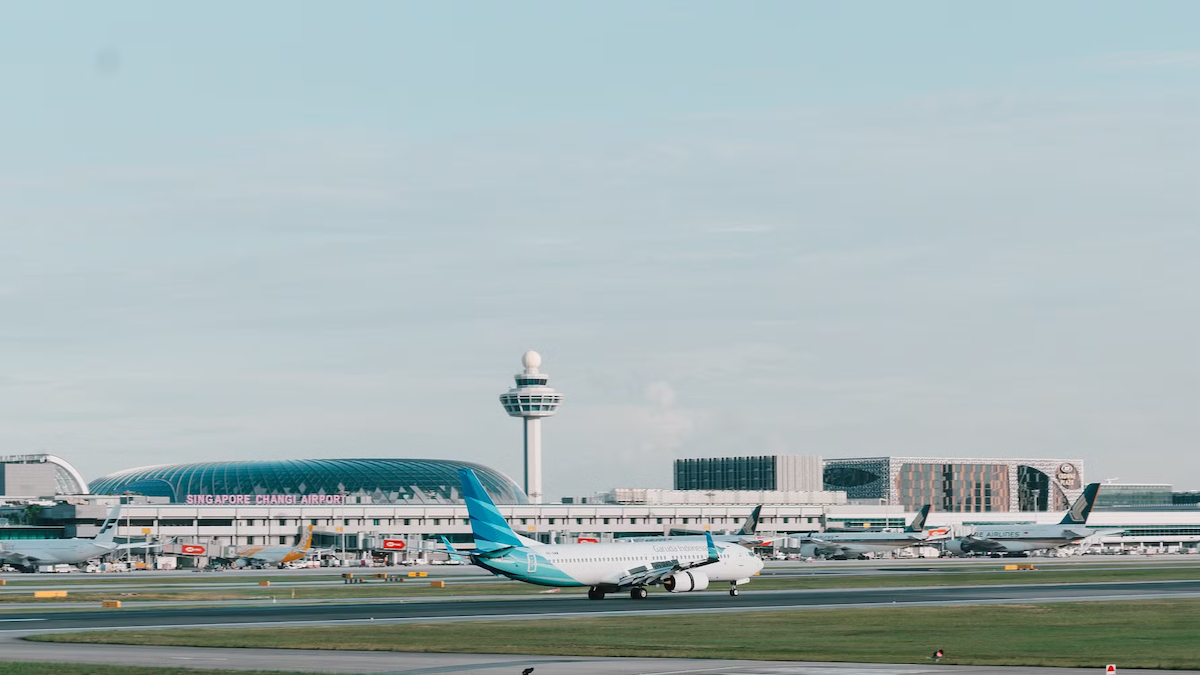Since 7 April, most of us have been staying within the walls of our own homes (I hope).
The only ‘outside world’ we know these days is made up of the coffee shop downstairs, the nearest supermarket, and the neighbourhood park.
It’s been a long time that I haven’t seen any part of Singapore beyond a 2km radius, other than through my friends’ Instagram stories.
But while we stay at home, one group of people is always out and about, observing the comings and goings of Singaporeans every day.
These are the more than 3,000 enforcement officers and safe distancing ambassadors who are working hard to minimise the spread of Covid-19, by patrolling public areas and making sure people abide by safety measures.
We got in touch with one safe distancing ambassador to understand what his job entails.
Introducing Howard
Before the pandemic, 59-year-old Howard Lim was leading tour groups around the city, introducing people to Singapore’s attractions, museums and cultural districts.
He’s been a licensed guide for the past 32 years, well equipped to give tours in English, Mandarin and local dialects.

As the coronavirus began to impact travel, Howard’s job swiftly took a nosedive. “[Work in] the tourism industry is totally zero, nothing at all,” he says.
For him, taking up the Singapore Tourism Board (STB)’s offer to become a safe distancing ambassador was both a means to adapt and a way he could “contribute to society”.
While it can’t compare to his full-time work, it at least provides a “basic” income. Along with government grants, it’s enough to ease his financial stress for the time being.
On the other hand, he also didn’t want to be cooped up at home with absolutely nothing to do — a situation that some of his friends in the industry are now facing.
[Not knowing what to do] is very, very tough. But with this duty, at least I get to mingle around with colleagues. At the same time, we meet shop owners and people in the public.
Howard Lim, Safe Distancing Ambassador

Patrolling Little India
Prior to his first day, Howard was prepped for the job through a simple training session over Zoom.
An STB officer briefed him on what to look out for, how to communicate with people gently, and most importantly, to make sure he maintains safe practices as well.
“We have to put on our mask, use hand sanitiser, do temperature taking, don’t walk too close to each other, and wash our hands frequently too.”
Although he’s an early riser, patrol only starts at 11am when most shops have opened and people head out to buy their necessities.
Three days a week, Howard takes a bus and train from his home in Hougang to Little India, where he has been assigned.
The cultural district was always a regular feature in his tour itineraries, so he’s very familiar with the area.

“Little India is not so small actually,” he shares a bit of his knowledge. “In fact, it’s about 900 shops altogether, if they were all fully open.”
To cover the whole area, the safe distancing ambassadors are split into teams of two or three to patrol different zones, rotating between the zones every week.
A Few Bumps, But Public Awareness Has Improved
As he does his rounds, Howard keeps a lookout for crowding in areas like markets, restaurants and grocery stores.
Markets in Little India are particularly busy, not just in the mornings, but all the way from day to night, he shares.
He also checks if there are any people out in public without a mask.
Ambassadors like himself work in tandem with enforcement officers — they don’t have the authority to issue fines, but they approach people who flout the rules and remind them of what they should do.
If he finds that they have not changed their behaviour after being advised, he then takes photos and reports the case to an enforcement officer, who will take further action.

On average, Howard says he encounters about two or three cases a day — an improvement compared to the start of the circuit breaker.
In the beginning, a lot of people were not used to [the rules]. When it comes to safe distancing, they would just think, ‘Actually, I’m not too close right?’.
Howard Lim, Safe Distancing Ambassador
One of the early problems he faced was that a few owners who lived in shophouses above or behind their stores couldn’t distinguish when they needed to wear a mask.
Initially, some of them had the misconception that it was okay to leave their masks off if they stayed inside their shops which had been deemed non-essential.
“So we had to inform and educate them: ‘As long as you open [the shutters], even if you’re not open for business, then you need to wear a mask.’,” Howard says.
Sometimes, he also notices that people like to go grocery shopping with a few of their family members in tow. And while there’s no rule against this, it definitely contributes to larger crowds, especially in small shops.
“But it’s not so bad nowadays. People are more aware of safe distancing and wearing their masks properly.”
“There has been more publicity and education through the media, which is actually very important. I feel that there has been a change in the public’s attitude,” he adds.
However, while people are quite compliant on “normal days”, he also shares that things got a bit more chaotic on Mothers’ Day which passed recently.
Now that people can’t go out to celebrate, the amount of food delivery orders skyrocketed on that day.
Naturally, many people were anxious to collect their orders quickly, which resulted in them hovering around restaurants, waiting on their toes.
Understanding The Difficulties Of Shop Owners
As he meets different people on his patrol, Howard has also learned to exercise patience and care beyond just upholding the rules.
For example, he has observed the struggles of small business owners who try their best to deal with crowds.
Businesses are responsible to maintain safe distancing among their staff, customers and delivery riders on their premises.
However, it’s not always easy when the circuit breaker has brought on a large influx of customers flooding into grocery stores.

“Many of the shops are small shops, like minimarts, just operating as a one man-show,” Howard explains.
With their limitations, he understands that it’s not possible for some shopkeepers to step up additional measures like registering customers or taking their temperatures, all while running the store.
This is where his role comes in, to support these shop owners and help them remind the public not to crowd and rush.
He even shares that he gets concerned about the traffic as some shops are located along narrow roads in the old district.
“So we also worry about the vehicles. Whenever we pass by, we will remind people and shop owners [to be careful],” he adds.
How Do Safe Distancing Ambassadors Have Lunch?
In between their duties of looking out for the community, Howard and the other safe distancing ambassadors take an afternoon break when they can rest and have their lunch.
When he was first deployed, this proved to be a problem because they, like everyone else, were not allowed to dine in anywhere.
However, it wasn’t long before they had a comfortable place to enjoy their meals.
“I was very touched about this. STB looked for a proper place for us, so now we go to the second floor of Tekka Place,” Howard says.
Of course, they stay spaced out from one another as they eat, but it doesn’t stop them from having great lunchtime conversations.
We Must Do Our Part To Protect One Another
After another evening shift, Howard’s day ends at 8pm, when he makes sure to report all his observations to the enforcement officer before hanging up his lanyard.

Life at home has definitely been impacted in a few little ways, he says. For one thing, he gets home for dinner later than he used to, and his wife insists to wait for him.
“Yeah, that’s why I pity her,” he says with a laugh. “Sometimes I tell her to eat earlier, but she wants to wait for me to have dinner together.”
He also makes an effort to be extra cautious of his hygiene around her, after spending the whole day in contact with many people.
It’s more important than ever to remove his mask upon getting home, take a shower, and change into new clothes before he sits down to relax. Good hygiene habits like this should be the norm, he says.
On a final note before we hang up the phone, Howard shares his hopes that everyone will do their part to keep Singapore safe.
“SG United means we need to help each other. Remember: If it’s for something necessary, then it’s okay to go out. But if not, please stay at home,” he says.
“I hope we will get over COVID-19, and then we can get back to normal life.”
Featured Image Credit: Youth.sg / Singapore Tourism Board








